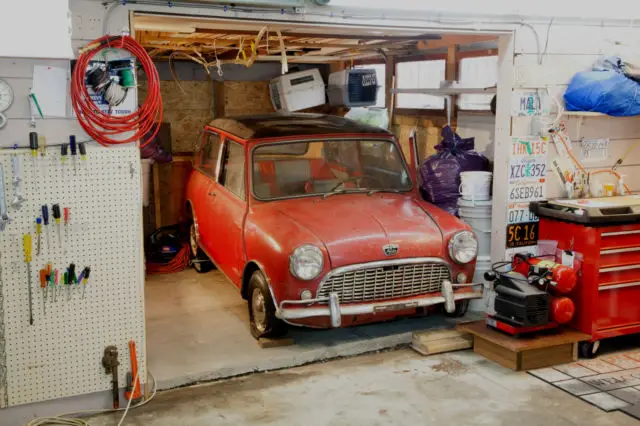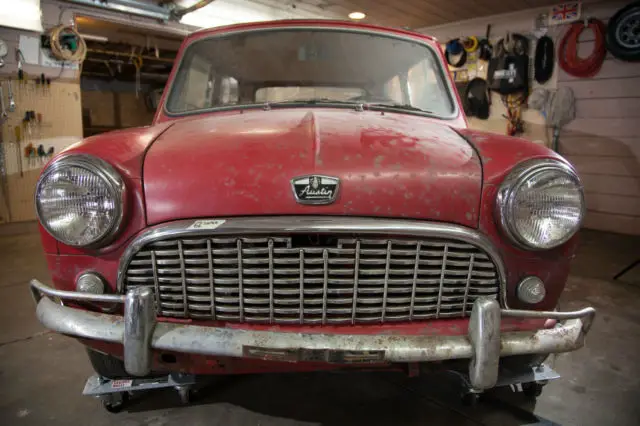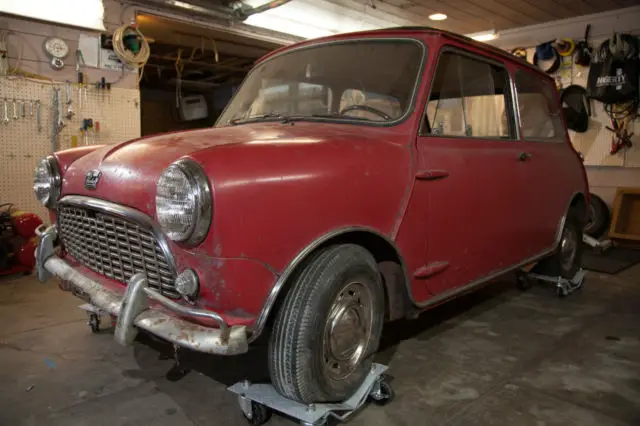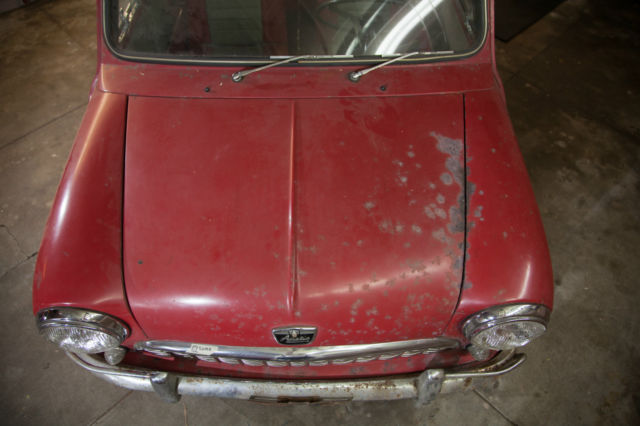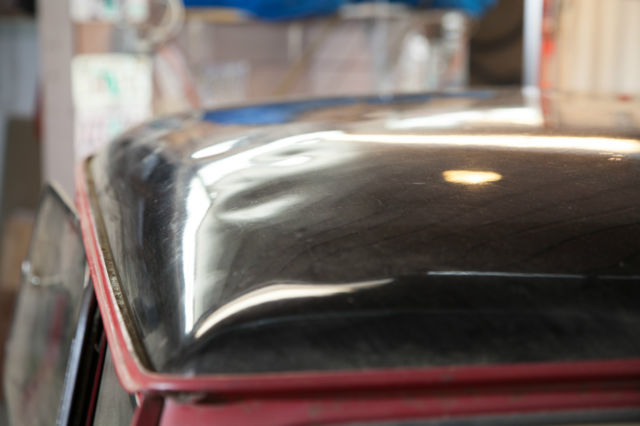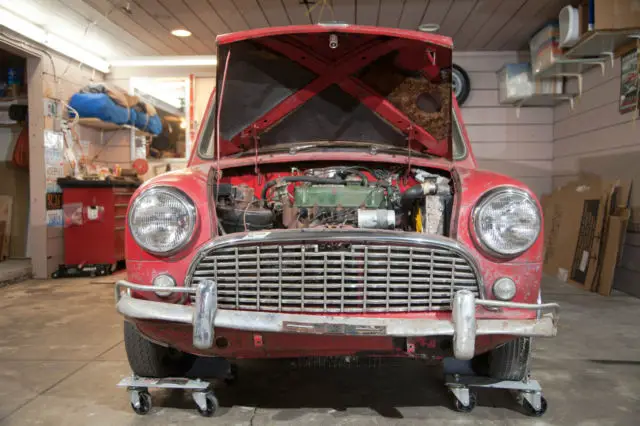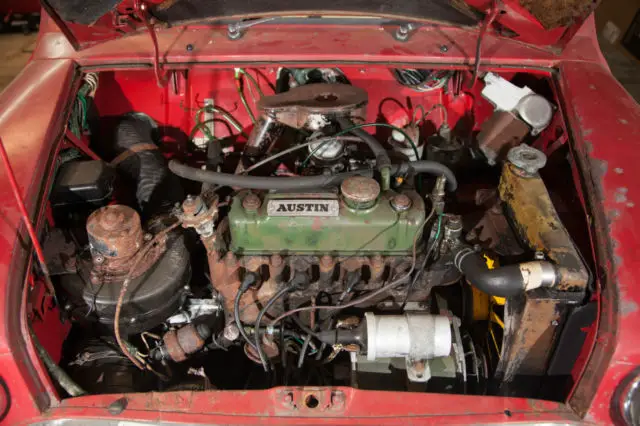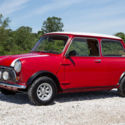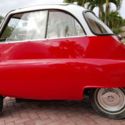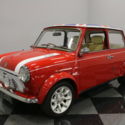1962 Austin Mini Super - Barn Find - Super Rare - Unrestored
| Make: | Austin |
| Model: | Mini Super |
| SubModel: | LHD, North American Export, Super-de-Luxe |
| Type: | Saloon |
| Trim: | Super 2 door Saloon |
| Year: | 1962 |
| Mileage: | 30,343 |
| VIN: | 8AM-U-H/29255 |
| Color: | Tartan Red & Black |
| Engine: | 850cc |
| Cylinders: | 4 |
| Fuel: | Gasoline |
| Transmission: | Manual |
| Drive type: | Manual Transmission |
| Interior color: | Red & Grey/Gold Brocade |
| Vehicle Title: | Clear |
| Item location: | Portland, Oregon, United States |
1962 Austin Mini Super LHD, North American Export, Super-de-Luxe Additional Info:
This 1962 Austin Mini “Super” – a rare, little-known model — is a classic “barn find,” it was discovered near Portland, Oregon after being parked in 1972 – with only 30,343 miles on the clock. What’s more, it has escaped the ravages of rust – it’s in nearly pristine condition, considering it’s been parked for 40 years. It was factory-ordered by the original owner and has stayed in the family until it was recently offered in an estate sale after his passing.When classic Mini enthusiasts think of early Minis, relatively few are aware there was an additional model between the base Mini and the performance-version Mini “Cooper.”
This Austin Super is the only known surviving example in the U.S., just one out of 175 Austin sent to the U.S. during the model’s entire production run. One sister Mini Super, badged as a Morris, is likewise the only known survivor out of roughly the same number shipped over. Including worldwide exports, a scant 16,000 Supers – including Morris and Austin – left the factory.
It’s a rare car!
When the classic Mini launched in 1959, it was built to be an inexpensive, fuel-efficient car that – in a pinch – could carry four full-size adults. Even in its bare-bones trim when launched, it was a big hit. Designers quickly began working on classier and quicker models.
Not long after, in June 1961, the company began building a more-upscale model, the Mini “Super.” However, just one month later, in July, production began on the Mini “Cooper” which, when released, pretty much stole the limelight.
In some promotional materials, the two models were shown as twins, with the Cooper referred to as “the sports car version of the Super.” The basic Mini – and the Super – had 850cc engines (technically 848cc), but the Cooper had a larger, built-for-performance 997cc engine, twin carburetors and front disc brakes. In terms of go-power, and stopping power, it was a superior car.
Mechanically speaking, the standard 850 Mini and the Super are, for the most part, identical.
On the exterior, the Super and Cooper had upgraded trim, including bumpers with corner bars and over riders, full wheel covers, and various other features. Both models typically had contrasting color roofs. Inside, the interiors were virtually identical, including the 3-clock dash with water temperature and oil pressure gauges, carpets, and two-tone brocade upholstery. To help mute road noise, additional soundproofing was added. Additional undercoating also helped quiet the car and provide additional rust protection.
Please note that this Mini is in unrestored condition.
The extent of mechanical restoration needed is unknown, no effort has been made to run the engine. After sitting so long, all the hydraulics, brakes as well as clutch, will need to be gone through, as well as the complete fuel system. As far as the body shell, there is – amazingly – no rust or cancer. Moderate amounts of surface rust should clean up easily. The paint appears to be original, there is no evidence of collision damage, just a few dings. The only work done so far was to clean up the paint, and free the wheels so it can roll.
Factory build records indicate this Super was built as Tartan Red with a black roof and red and grey/gold brocade interior. It was built in February 1962 and immediately exported to Portland.
This is a very rare car that rates a mechanical restoration for driveability, but the exterior and interior have a patina and “survivor car” quality that collectors and enthusiasts typically better appreciate.
Referrals to qualified Mini restoration specialists are available, as well as assistance with shipping worldwide.
